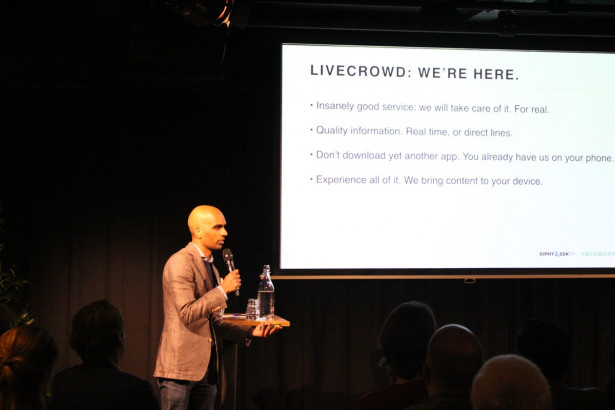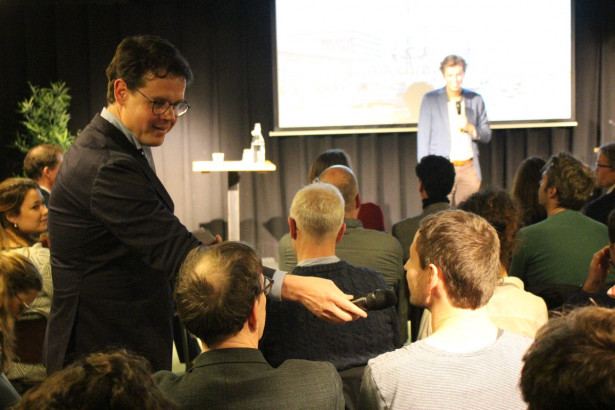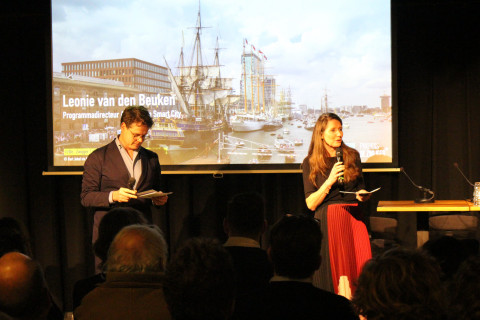2020 is the year of big events in Amsterdam. The Dutch Grand Prix in Zandvoort, UEFA 2020 and SAIL 2020 will take place in the spring and summer and attract millions of tourists to the region. Add hunderds of festivals and it is clear to see the city and region must be able to deal with large masses of people. How do we ensure that major events are accessible, and which travel methods are available? Which innovations already exist and can help with this? Together with partners of Amsterdam Smart City, big events and event locations, we discussed the accessibility of large events in Pakhuis de Zwijger on the 14th of January.
2020 is the year of big events in Amsterdam. The Dutch Grand Prix in Zandvoort, UEFA 2020 and SAIL 2020 will take place in the spring and summer and attract millions of tourists to the region. Add hunderds of festivals and it is clear to see the city and region must be able to deal with large masses of people. How do we ensure that major events are accessible, and which travel methods are available? Which innovations already exist and can help with this? Together with partners of Amsterdam Smart City, big events and event locations, we discussed the accessibility of large events in Pakhuis de Zwijger on the 14th of January.
The night was opened by program director Amsterdam Smart City, Leonie van den Beuken. She set the goal for the night: as Amsterdam Smart City we would like to accelerate innovations and learn from and with each other. After this, Nathan Wiersma, producer of SAIL, a sailing party with hunderds of tallships and more than 2 million visitors, tells the audience about all the boats that have to enter the Port of Amsterdam, which is quite narrow. And all the boats stay in this small area. Because of all the people, an extra bridge will be built between the city and Java eiland.

In Zandvoort the amount of visitors is a lot smaller: ‘only’ 100.000 people are expected to join the Formula1 races in May. However, Zandvoort is not as accessible as Amsterdam. To get to Zandvoort by car, you have to drive through the City of Haarlem and then take one of the two roads. That is why the City chose the train and the bicycle as the two main means of transport. Before the F1 events, more than 1200 supply trucks have to enter the area. The City places its residents central and doesn’t want to burden them with all the incoming and outgoing. More about the mobility plans of Zandvoort here: https://www.zandvoort.nl/bestandsopslag/introduction/downloads/F1_Mobiliteitsplan/Bijlage_8A_Mobiliteitsplan_Ter_Inzage__anoniem_.pdf

The Amsterdam Metropolitan Area has quite some experience with big events. How does this work? Chris de Veer from the Province of North Holland, Hans Bakker from the GVB (Amsterdam tram and bus agency) and Julie van Heteren from the Amsterdam Transport Authority stress that cooperation is key. The companies and governments have the same goal, which is getting people from A to B smoothly and safely. And after all these events and festivals the authorities know what to do when there are more than 100.000 people in a small area. A few years ago, there was an incident with people walking next to the high ways in the rain, because there weren’t any buses and they had to wait for a long time. Since then, authorities keep weather conditions into account and with incidents like these, all available buses, trams and trains head over to the place where they are needed. To be better prepared for emergencies like these, a complete overview of the city is needed with these kinds of festivals. This overview is also useful if you want to spread people over the different areas.

The panel indicates the role of companies like TomTom and Google Maps in these. They think it is important that all apps and navigation systems provide the same kind of information or cooperate in changing routes or spreading people. Chris thinks it is important to make standards on a European level, so it is clear for companies how governments want to deal with a lot of people in a small area. Therefore it is important to start talks with companies. Chris: ‘Go through all possible scenarios with Google and TomTom. If people have to leave an area quickly, they can redirect people.’
An inspiring presentation was given by Arwind Gajadien from Livecrowd. Livecrowd is a startup that communicates with users via other platforms. Currently they are a landing page for 250 events and festivals. Through e.g. social media platforms they find a way to get peoples’ attention and inform them about routes or alternative routes. The Johan Cruijff ArenA is one of their customers.

Maurits van Hovell of the Johan Cruijff ArenA, took part in the second panel, together with Upscaling expert Willem van Winden, from the University of Applied Sciences and Erik Tangelder from the RAI Convention Center. The Johan Cruijff ArenA, together with partners, set up a big Operational Mobility Center (OMC). The center keeps an eye on all infrastructure, traffic and people around the area and helps people get to the stadium as smoothly as possible.

The OMC is unique and cooperation succeeds because the challenge is big enough. Parts of the OMC were scaled up to the RAI and Schiphol Airport will start working with an OMC soon. However, scaling up more is quite hard. Willem van Winden thinks that’s striking: ‘There are so many people during many events, how is it possible not to work with an OMC? One of the reasons might be money. If you can’t make money out of it, initiatives are hard to scale up.’ Maurits: ‘Some parties do not see the importance of an OMC and then it is too expensive to set it up.’ Erik: ‘But collaboration on this, can save a lot of money as well. Scaling up makes a lot of processes cheaper.’
From the audience a question raised about mobility as a service. We expect a lot of MaaS solution in the upcoming years. How can the ArenA and OMC deal with that? Maurits tells us the OMC is the ideal place to experiment with MaaS solutions. And since they are not yet there, the OMC continues with its current strategy. Daniel van Motman from the City of Amsterdam is enthusiastic about the OMC: ‘It’s a perfect way to see what is happening with big crowds, you can learn from it and use these lessons for regular developments in the city such as Central Station, shopping streets or developing areas’.

Leonie closes off the evening: ‘We discussed many events and event locations and saw the differences. SAIL can learn every five years and the ArenA can learn every week. However, what we all have in common is the aim for smart solutions. We aren’t looking for more space, more roads or asphalt. We want to do things smarter. And by collaborating, we can achieve that!’





